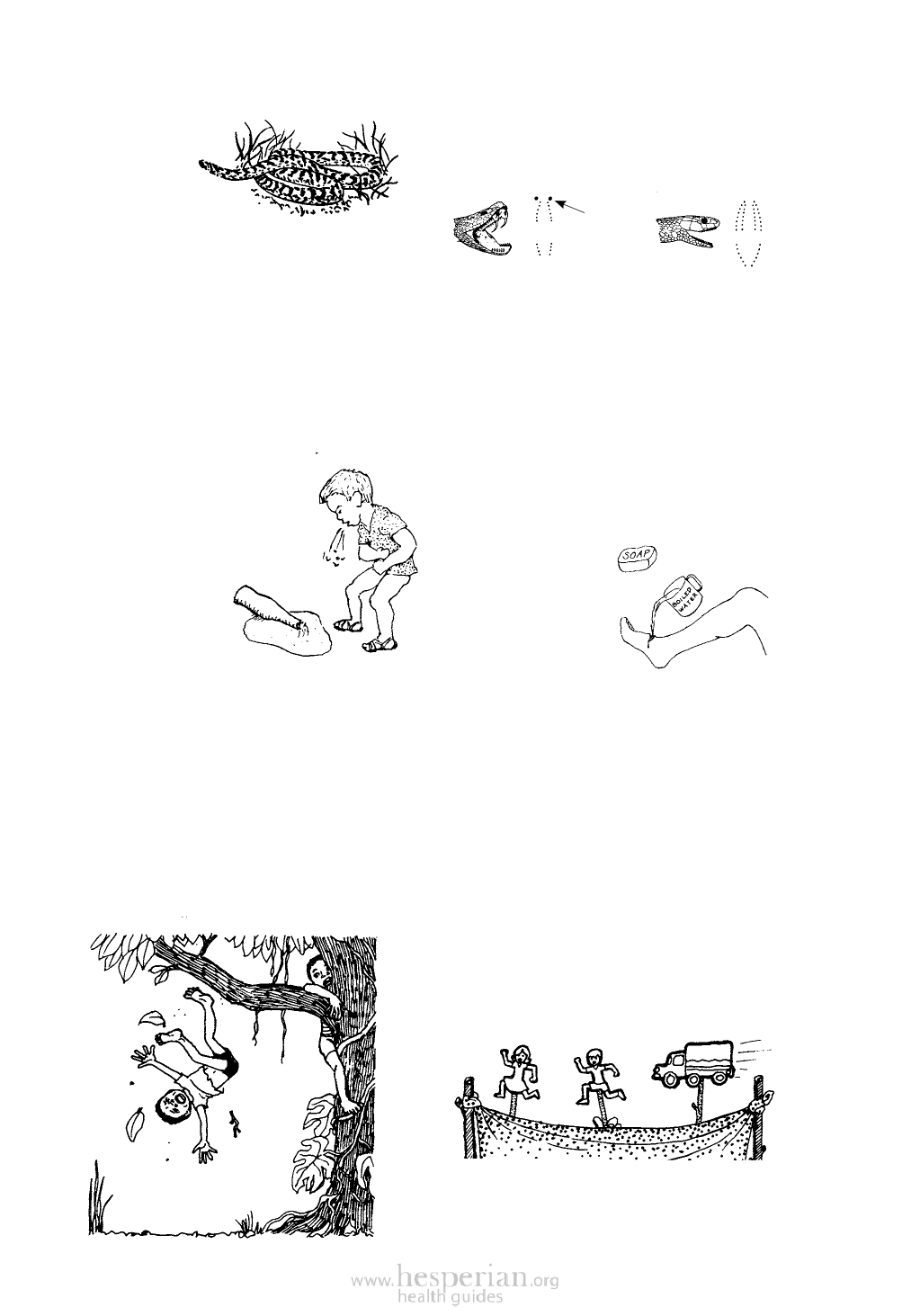
24-8
To prevent bites and stings, they can . . .
• warn younger
children about
where snakes,
scorpions, and
bees five
• clear grass and
weeds away from paths
To prevent choking and other problems, they
can. . .
• be sure babies do not play with small round
objects such as beans or marbles (babies could
easily choke on these, or put them in their noses
or ears)
• mash foods like groundnuts and beans before
feeding them to babies
• give teething babies large, clean objects to chew
• make sure poisons such as
medicines and insecticides
are kept out of reach, and
that kerosene is not stored
in drink bottles
• warn younger children not to
eat strange fruits
and plants, or drink
out of strange bottles
If an accident happens . . .
Snakebite
Learn to tell the bite of a poisonous snake from that
of a non-poisonous one. If someone gets a poisonous
bite, move him as little as possible. Moving will
spread the poison around the body. Get help fast.
fang
marks
poisonous
non-poisonous
Burns
Put in cold water at once. If the burn is bad, cover
loosely with a clean cloth. Give Special Drink.
Get help quickly. Never use grease or butter on
burns. Keep burns clean. Small burns are best left
uncovered.
Cuts and wounds
When possible, wash cuts
with soap and water that has
been boiled and cooled.
Wounds left dirty get
infected. Do not put mud,
iodine, or merthiolate
on open cuts. Only use
bandages if they are
very clean.
There are many basic treatments children can
learn. Here are a few suggestions:
Accidents
If someone has a bad fall from a tree or gets badly
hurt in a car accident, do not move him. If possible,
cover him with a blanket to keep him warm. Get
help quickly. I f he must be moved, make a stretcher
and put him on it gently, without bending his back,
neck, or bones that may be broken.
FINDING OUT HOW WELL THE ACTIVITY
WORKED
• Children can compare the number of accidents
before and after they take specific actions.
• They can talk about accidents they have prevented
and others that still happen.
OTHER ACTIVITIES FOR CHILDREN
• Children at school can organize their own first-aid
clinic for treating simple cuts and wounds
• Each older child can ‘adopt’ a younger child to see
that he crosses the road safely on the way to and
from school.
• Children can make plays and puppets to teach
about accident prevention. They can show these
to others at school, waiting at clinics, and at
village meetings.